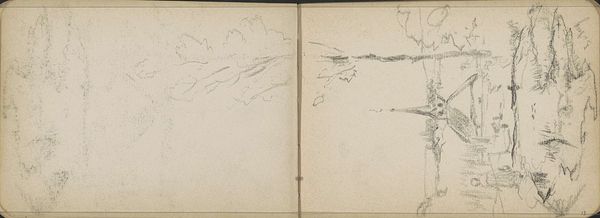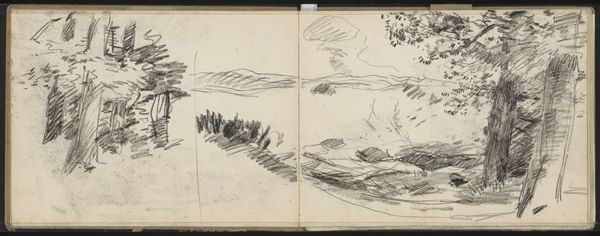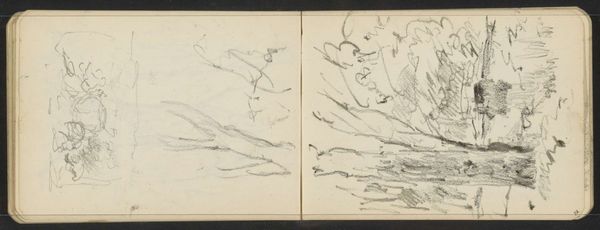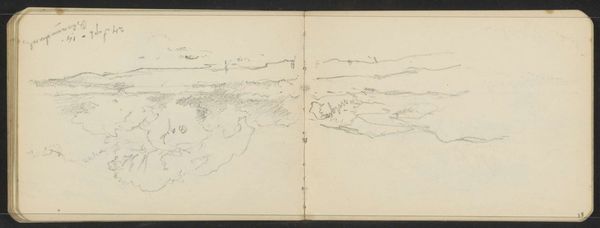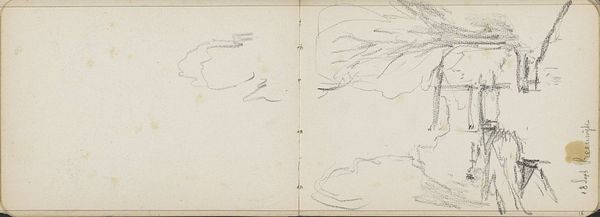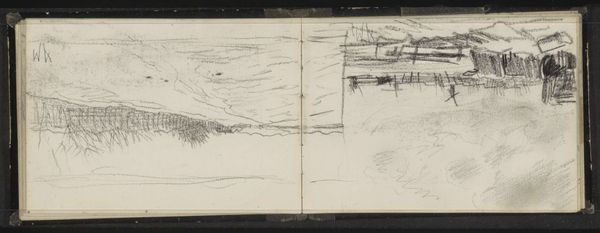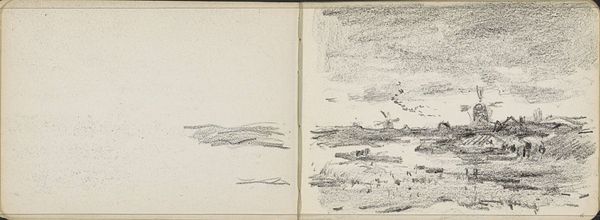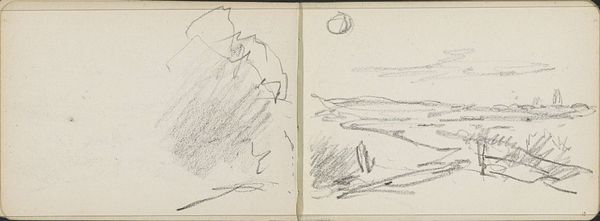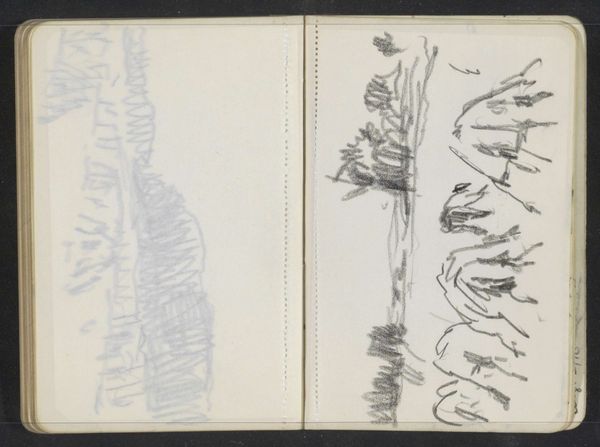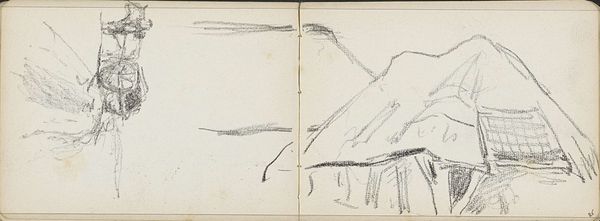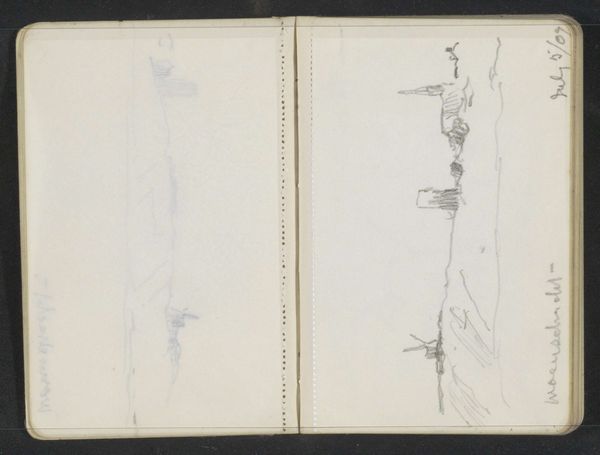
drawing, pencil
#
tree
#
drawing
#
pen drawing
#
pen sketch
#
sketch book
#
landscape
#
personal sketchbook
#
road
#
sketchwork
#
ink drawing experimentation
#
pen-ink sketch
#
pencil
#
pen work
#
sketchbook drawing
#
sketchbook art
Dimensions: height 115 mm, width 160 mm
Copyright: Rijks Museum: Open Domain
Curator: Before us, we have Willem Cornelis Rip's "Pad tussen de bomen," created sometime between 1914 and 1916. It appears to be a drawing executed with pencil and possibly pen, part of a sketchbook, rendering a landscape scene. Editor: My initial impression is one of quiet solitude, a moment captured during uncertain times, perhaps even during the First World War. The composition is intriguing; the lines are hesitant but capture the essential feel of trees lining a path. It’s intimate because it's so clearly a private, personal work. Curator: The context is really fascinating. Rip was working in a period of significant social and political upheaval. Landscape art itself was often employed as a medium for expressing national identity or even escapism during such periods. Considering the First World War began in 1914, we could view this path as a symbolic search for peace, refuge from the storm of global conflict. What might this path and forest symbolize? Editor: The path itself carries familiar symbolism, of course. It's the journey of life, a pilgrimage, the choices we make. And the trees? Forests are potent symbols—places of mystery, of danger, but also refuge and spiritual renewal. They've represented the subconscious in many cultural traditions, the place where inner transformation occurs. The fact that this path runs *between* the trees... it almost implies a precarious balance between conscious and unconscious. Curator: Precisely, and what about the act of sketching itself, what connotations and narratives might we build upon there? For whom does he depict the trees and this road, is it just himself or the everyman facing hardship and global uncertainty? The use of such sparse, simple materials and minimal marks begs many interesting questions of accessibility, commentary, and ultimately a certain politics of artistic interpretation. Editor: The artist’s touch seems light. Maybe it's that transience or fragility that resonates, given the historical context. A landscape threatened by war. A sense of longing. It’s beautiful how much emotion can be conveyed through so few lines, revealing his intent without a great use of technical abilities to lean on. Curator: Yes, and exploring that historical dimension combined with the emotional impact really enhances our reading of this sketchbook drawing. It urges us to consider the interconnectedness of individual experiences with the grand narratives of war, nature, identity, and our interior lives. Editor: Ultimately, seeing this piece, I am struck by how symbols that seem simple on the surface—a path, some trees—can hold so much depth. Rip really captures that complexity through what appears as a simple pen and ink sketch, asking questions still relevant for us today.
Comments
No comments
Be the first to comment and join the conversation on the ultimate creative platform.

